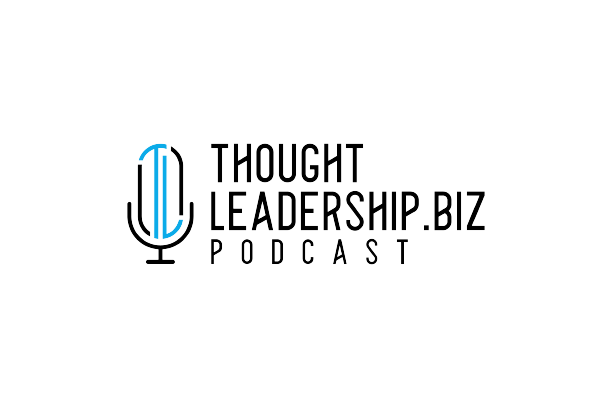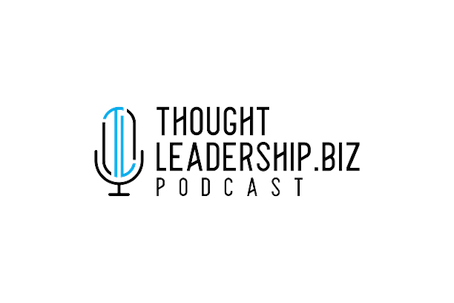
Read / Watch / Listen
Stream this article from your favorite podcast audio or video streaming service as referenced below.
Read: Below
Watch: https://youtu.be/k0wLZyewonc
Listen: https://anchor.fm/thoughtleadershipbiz
More ways to read, watch and listen:
Read the Article
I’ve been compared to many things in my life – unpleasant things, mostly. Many of them I can’t even repeat in a podcast with such a sophisticated and refined readership.
But a couple of innocuous regulars spring to mind:
One is a caveman, probably due to my rugged good looks. The other is a bear, probably due to my svelte physique and uncanny ability to sniff out a BBQ within a 10 mile radius.
But my question for you all today is:
What do Goldilocks and the The Bears and Technology all have in common?
It’s an important question, because right now business are on the brink of a workflow revolution, and these three elements, if alchemised properly, can produce productivity gold.
So, what’s the connection? Well, let me explain. . .
*****
Right from the dawn of mankind, we have understood the importance of meetings.
Flints, furs and food were the commodities, and forests, caves and clearings were the conference rooms. Everything was face-to-face because it needed to be. And that traditional ‘in-person’ approach worked fine – until just recently when the pandemic struck and made us rewrite the rulebook.
In the modern world, traditional workplace meetings present numerous challenges, such as everyone having access to the right files and documents, all stakeholders being punctual and physically present, the communication flow and discussion being effectively managed and the goals produced being clear, meaningful and actionable.
Over the last decade or so, as businesses have become more complex and the demands have increased, computers and tech have played a more important role in helping us overcome these challenges. It’s a matter of fact that the smartphone you have in your pocket is WAY more powerful than all the computers combined that put the first man on the moon. And it’s true to say that technology has enabled us to take a giant leap forward in terms of business – and meetings.
When Covid-19 appeared literally overnight and threw a super-sized spanner in the works, it not only turned the world upside down, it also inadvertently turbocharged the online meeting industry. According to Forbes, the web conferencing market is set to reach a staggering $10.46 Billion by 2027.[i]
So, it’s clearly worth looking at how we as business owners can harness the power of this technology so we can maximize the impact of our meetings, boost productivity and, ultimately, increase our profits.
But, as ever, it’s a two sided-coin and there are potential problems as well as positives.
So, how much is too much? Where do we draw the line between tradition and tech?
Let’s have a look at some of the pros, then some of the cons.
*****
So, in terms of pros:
First, is cutting back on costs: There’s no travel time, for starters – and that’s a MASSIVE win right there. No travel time means no travel expenses and no time wasted on the road. Instead, that time can be reinvested in moving important projects forward, which is the WHOLE POINT of being in business, right?!
Second, is environmental impacts: Obviously, less travel also means less carbon emissions. The fact that people are not meeting together in one physical space also means that there’s less of a drain on other resources, such as lighting and water.
Third is efficiency: There’s no need to scrabble about trying to find a free meeting room or worry about trying to get everyone in the same physical space together at a certain time. It’s much easier to schedule stuff when it’s all online.
Fourth is recording and live streaming: The recording capability is an invaluable tool for many organisations, due to the fact that there is a record of the event that can be watched again as needed, as well as watched by those who were not able to be present. Zoom is one of the most well-known software programs for recording meetings, although there are other alternatives, including integrated solutions such as Microsoft Teams. The live streaming option is also helpful if you want the meeting to be broadcast to a larger non-contributing audience.
Lastly, is interviewing: As managers, we’ve all been there sifting through a mountain of CVs and application letters trying to devise a long list for interview before then having to schedule and meet face-to-face the candidates. It can be an administrative black hole, a logistical pain in the ass and, frankly, a significant waste of valuable time! But now we have the ability, with a few clicks of a mouse, to easily schedule a series of quick online interviews and enjoy chatting to potential recruits from the comfort of our own home – or the beach, if we use one of the jazzy backgrounds. . .
So, that all sounds GREAT, but there are some cons.
First, you need extra software as well as the appropriate hardware – and then there’s the annoying updates. Hopefully, everyone has the kit they need to handle online meetings. But don’t count on it! So many things can go wrong, from software fails to hardware issues to people falling off the learning curve and dribbling in the corner crying for mommy because the tech has bamboozled their brain. As a manager, you’ll be there to pick up the pieces. And it ain’t always pretty.
Then, second, you have time zone troubles: If your team is spread across the world, it can be tricky to find a mutually suitable time to meet. Do you really want to be peeling yourself out of bed at 3am for an hour-long professional pow-wow? Neither does anyone else.
Third is communication breakdown: It happens. But it happens more online, due to the fact that there simply aren’t always the full profile of visual clues or audio clarity that allow us to fully understand what the other person is saying. If someone has a thick accent, mumbles or speaks too quietly (or, in the worst-case scenario, there’s a combination of all three), it compounds the problem and has the potential to create bad feeling as well as derail the meeting.
Next we have the issue of unintentionally talking over each other: Even with the best intentions, issues with connection speed and subsequent lag time can mean that we are constantly interrupting each other and the conversations end up being half-filled with apologies. It’s annoying but sometimes unavoidable.
Lastly, we have the big one: Internet connection issues. If some participants are experiencing problems with their connection, it can make you feel like you are conducting a séance rather than a meeting. Instead of cracking on with the agenda you’ll find yourself repeatedly calling out into the ether: ‘Is anybody there?’ only to be met by complete silence or seemingly phantasmal voices drifting in and out of cyberspace.
*****
So, with the pros and cons in mind, what should we do? The most important thing to remember is that we each need to choose the right combination of approaches to respond to the needs of our own business and the people who work in it.
Which brings us, finally, to Goldilocks – Goldilocks, bears and technology, remember?
You all know the story of Goldilocks and the three bears, right? So, I won’t bore with it again. But you’ll remember that the little girl tastes three pots of porridge: one too hot, one too cold, and one JUST RIGHT.
It’s that Goldilocks Zone that we each need to find for our own business needs; a blend of approaches that’s just right. If we discard too much of modern tech, we’re in danger of reducing our productivity and profitability. If we include too much, we’ll reduce the effectiveness of our team due to an increase in complexity that’s too hard to handle.
There’s also an argument that if we introduce too much tech and rely on it too heavily, it will take over the world and destroy us all – but that’s a thought for another time. . .
The bottom line is that the use of tech in meetings doesn’t need to be ‘either/or’. The key to promoting productive meetings – whether virtual or not – is striking the right balance.
If we get it right, we can have our professional porridge and eat it, too. If we get it wrong, we may well find ourselves back in the stone age. . .
This is Chris Machut. [sniff sniff] Hmmm… I smell burgers..
Until next time!
[i] https://www.globenewswire.com/news-release/2020/08/20/2081071/0/en/Web-Conferencing-Market-to-Reach-10-46-Billion-by-2027-Increasing-Product-Use-in-Covid-19-Pandemic-to-Aid-Growth-says-Fortune-Business-Insights.html
Latest posts by Chris Machut (see all)
- Episode 12 – “Crisis? Deal with it!” - November 19, 2021
- Episode 11 – “Entrepreneurship Sucks (Sometimes)” - October 16, 2021
- Episode 10 – “Offensive and Defensive Leadership” - September 15, 2021










